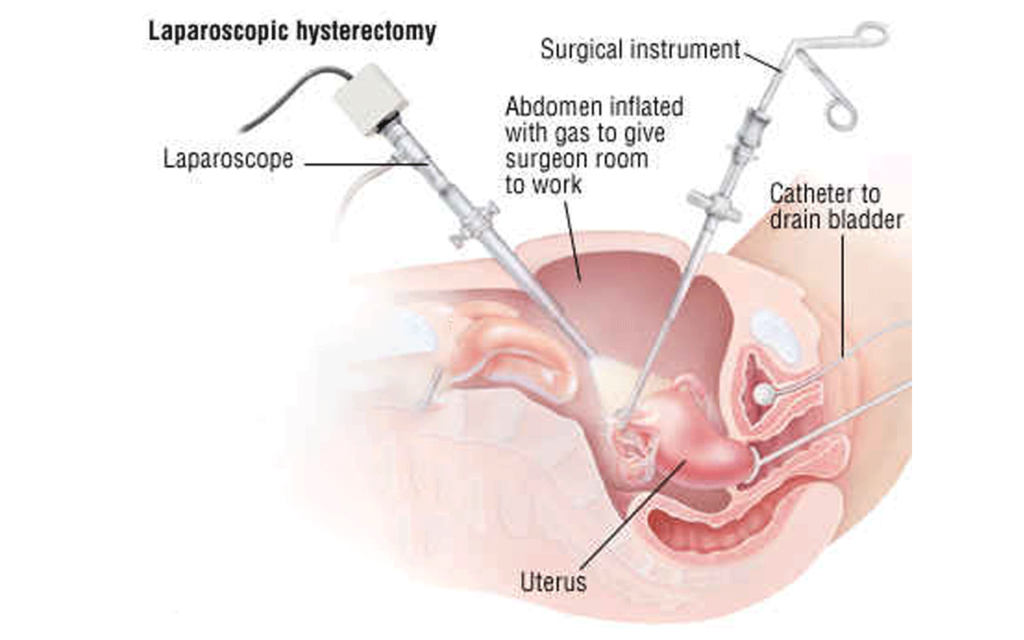Total Laparoscopic Hysterectomy (TLH) is a sophisticated surgical technique used to remove the uterus through small incisions in the abdomen, guided by a laparoscope—a thin, lighted tube with a camera. This minimally invasive procedure offers several advantages over traditional open surgery, including reduced pain, faster recovery, shorter hospital stays, and smaller scars.

TLH is typically recommended for women who require removal of the uterus due to conditions such as uterine fibroids, endometriosis, abnormal uterine bleeding, pelvic pain, or certain types of cancer. Unlike traditional hysterectomy, which involves a large abdominal incision, TLH is performed using advanced laparoscopic instruments inserted through several tiny incisions in the abdomen. This approach allows surgeons to access and remove the uterus with precision while minimizing trauma to surrounding tissues.
The procedure begins with the administration of general anesthesia to ensure the patient remains unconscious and pain-free throughout the surgery. Once the anesthesia takes effect, the surgeon makes several small incisions in the abdomen, typically ranging from 0.5 to 1 centimeter in size. These incisions serve as ports through which specialized surgical instruments and the laparoscope are inserted.
Next, carbon dioxide gas is gently pumped into the abdominal cavity to create space and improve visibility. The laparoscope, equipped with a high-definition camera, is then inserted through one of the ports, providing the surgical team with a clear view of the pelvic organs on a monitor. This magnified view allows for precise manipulation of the instruments and meticulous dissection of the tissues.
Using specialized instruments, the surgeon carefully separates the uterus from the surrounding structures, including the ovaries, fallopian tubes, and ligaments. Once the uterus is fully detached, it is removed through one of the small incisions, often in pieces, depending on its size and the patient's anatomy. In some cases, additional procedures, such as removal of the ovaries and fallopian tubes (salpingo-oophorectomy), may be performed concurrently with TLH.
After the uterus has been removed and any additional procedures completed, the surgeon carefully inspects the abdominal cavity for any signs of bleeding or injury. Once satisfied with the outcome, the instruments are removed, and the incisions are closed with sutures or surgical adhesive. Sterile dressings may be applied to the incision sites, and the patient is transferred to a recovery area to awaken from anesthesia.
Following TLH, most patients experience significantly less pain and discomfort compared to traditional open surgery. Many are able to resume normal activities within a few days to weeks, depending on individual healing rates and the extent of the procedure. Unlike open hysterectomy, TLH typically results in smaller scars and reduced risk of complications such as infection and blood loss.
While TLH offers numerous benefits, it may not be suitable for all patients. Factors such as obesity, previous abdominal surgeries, and certain medical conditions may increase the complexity of the procedure or necessitate alternative surgical approaches. Therefore, it is essential for patients to discuss their individual circumstances and treatment options with a qualified gynecologist or surgeon.
In conclusion, Total Laparoscopic Hysterectomy (TLH) is a highly effective and minimally invasive surgical technique for removing the uterus. By combining advanced technology with skilled surgical expertise, TLH offers patients a faster recovery, reduced pain, and improved cosmetic outcomes compared to traditional open surgery.
